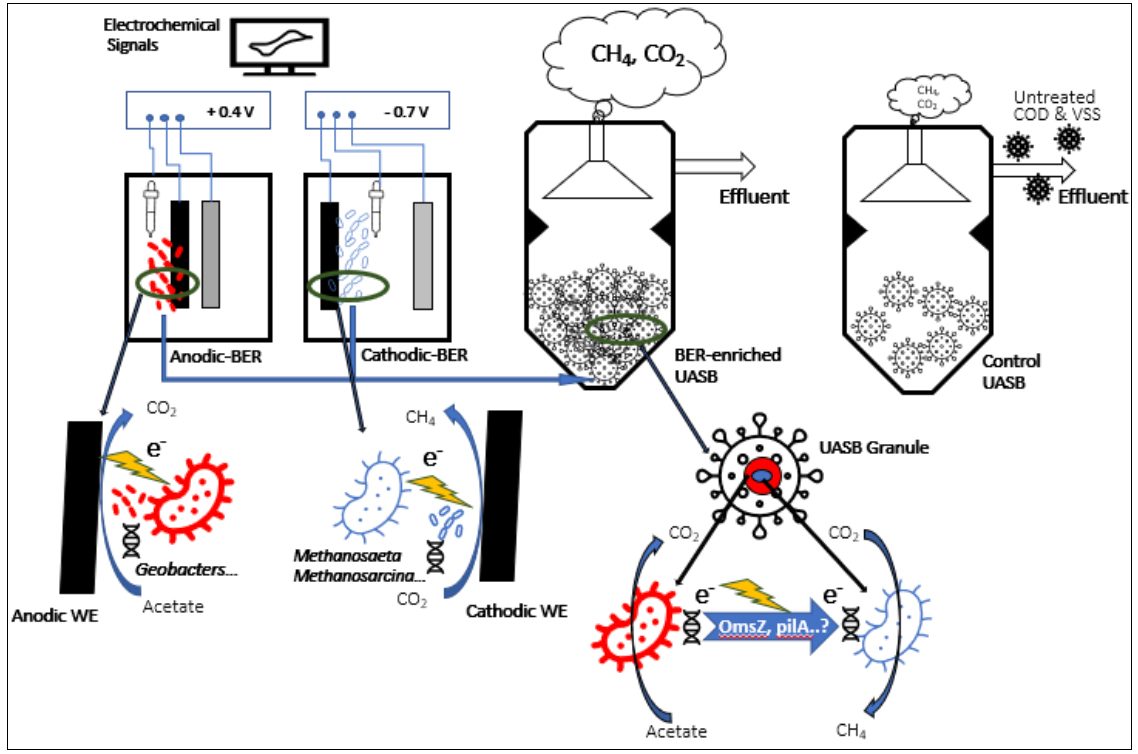Enhancement of The Start-up of an Up-flow Anaerobic Sludge Blanket Reactor Using Electrochemically Enriched Biofilm
Project Details
- Student(s): Mohamad Abdallah
- Advisor(s): Mahmoud Wazne
- Department: Civil
- Academic Year(s): 2023-2024
Abstract
A novel approach was used to accelerate the startup of a 20-L UASB reactor. The experiment was conducted at mesophilic conditions over two runs. In the control run (Run I) the reactor was inoculated with anaerobic sludge whereas in the second run (Run II) the reactor was inoculated with the same sludge in addition to enriched electro-active biofilms collected from the working and counter electrodes of anodic and cathodic bio-electrochemical reactors (BERs). Various performance parameters were monitored over 41 days. The daily methane production in Run II attained rates greater than 100 mL/L-d in 6 days while Run I required 28 days to reach similar values. Run II achieved 80% removal of soluble COD after 13 days as compared to 23 days in Run I.
Sludge washout was not detected in the effluent of Run II after approximately 3 days of operation, whereas Run I required 17 days to reach 70% VSS removal rates. Greater extracellular polymeric substance (EPS) values and protein-to-polysaccharide ratios attained in Run II may have accelerated the formation of EPS-mediated granules. Even though the microbial communities shared similar genera in both runs, their relative abundances were significantly different. Methanothrix was the most dominant methanogen in the control UASB sludge, but its proportion decreased in the enriched reactor as other archaeal genera, mainly Methanosarcina and Methanobacterium, increased in abundance. In both reactors, the Enterobacteriaceae family was the most abundant bacterial group. However, within this family, three genera, Citrobacter, Klebsiella, and Enterobacter were distinctly dominant at different stages suggesting potential links with the initial seed sludge or enriched biofilm consortia. The better performance in Run II was attributed to the addition of the electrochemically grown biofilm. The greater diversity of the microbial community in the BERs likely also contributed to the faster development of granular syntrophic communities in Run II.
Publications:
